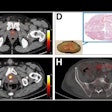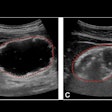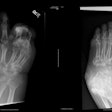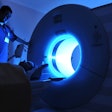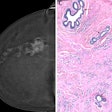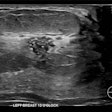
NEW YORK (Reuters Health), Jun 29 - Croatian researchers have come up with new guidelines for treating stress fractures of the femur, or thighbone, that prevent complications and difficulties that often occur with the condition, they say.
Stress fractures arise when bones are subjected to repetitive loading but the forces are not strong enough to causes an immediate break. Femoral stress fractures are rare, occurring chiefly in athletes and military recruits, Dr. A. Ivkovic and colleagues from the University of Zagreb Medical School write in the British Journal of Sports Medicine.
"Nevertheless, they do pose a great challenge for both diagnosis and treatment," Ivkovic and his team write. Such fractures have few symptoms, so diagnosis is frequently delayed, and complications can occur. These may include delays in healing and recurrence of symptoms, they explain.
The main goal of treatment is for an athlete to avoid the activity that caused the stress fracture in the first place, while maintaining conditioning with other types of exercise, after which he or she can gradually return to normal activity. In the current report, the researchers describe their approach for treating seven elite athletes, all of whom were able to return to their sport within 12 to 18 weeks of beginning treatment.
All athletes reported "vague" pain in the back of the thigh, particularly during and after working out. The researchers describe a series of physical exams to confirm the presence of the fracture and to check the progress of healing, including the "hop" test, in which the patient is asked to hop on the affected leg.
Treatment consisted of four three-week phases. In the first, the patients used crutches and avoided putting their weight on the affected leg. Next, they were allowed to walk on the affected leg and to swim and exercise in the gym, without stressing the affected leg. In the third phase of the treatment athletes exercised their entire bodies, ran in a straight line every other day, and used a stationary bicycle. In the fourth phase, they gradually resumed their normal activity.
At the end of each phase patients were tested again for the presence of the stress fracture; if the test was positive they repeated a phase.
By following this protocol, Ivkovic and his team conclude, femoral stress fractures can be treated effectively without complications and deconditioning.
Last Updated: 2006-06-30 10:13:33 -0400 (Reuters Health)
SOURCE: British Journal of Sports Medicine, June 2006.
Related Reading
Course of stress fractures in the juvenile skeletal system often prolonged, April 25, 2006
Copyright © 2006 Reuters Limited. All rights reserved. Republication or redistribution of Reuters content, including by framing or similar means, is expressly prohibited without the prior written consent of Reuters. Reuters shall not be liable for any errors or delays in the content, or for any actions taken in reliance thereon. Reuters and the Reuters sphere logo are registered trademarks and trademarks of the Reuters group of companies around the world.






